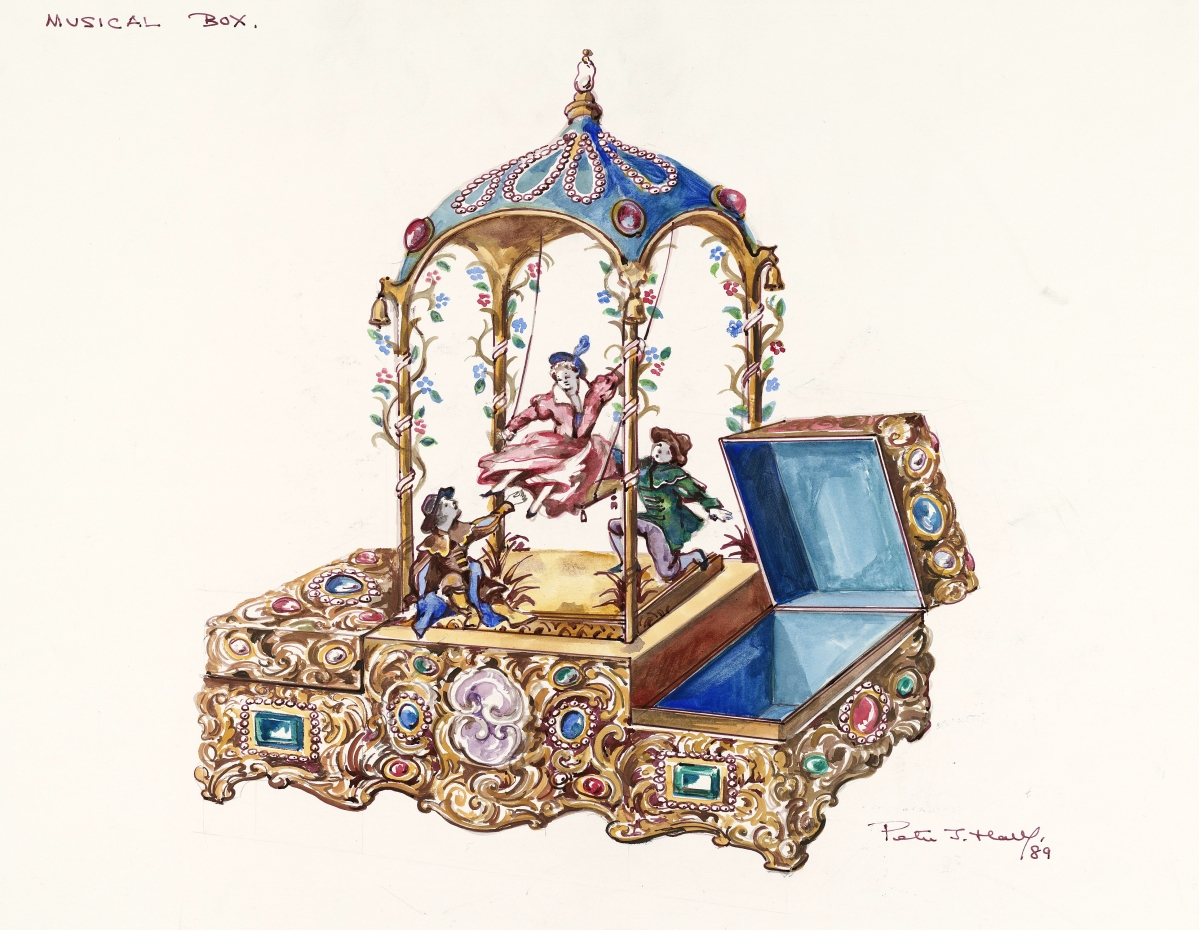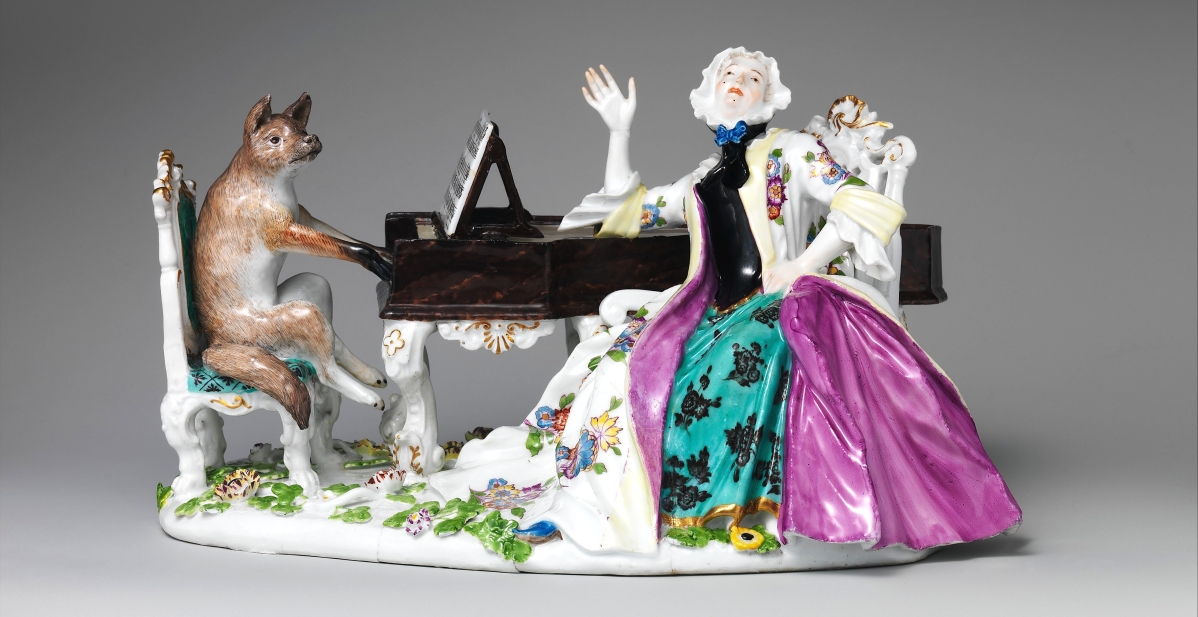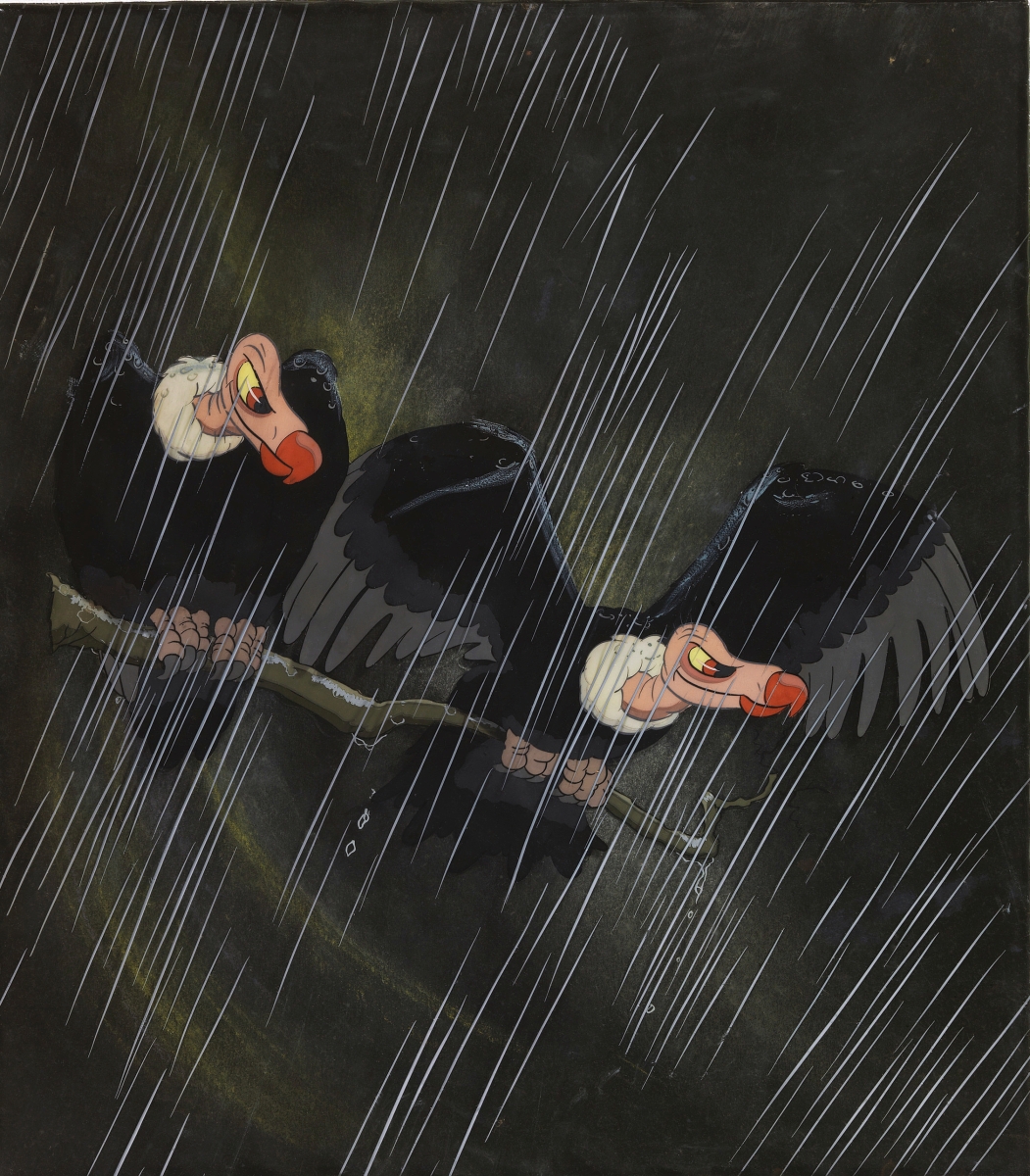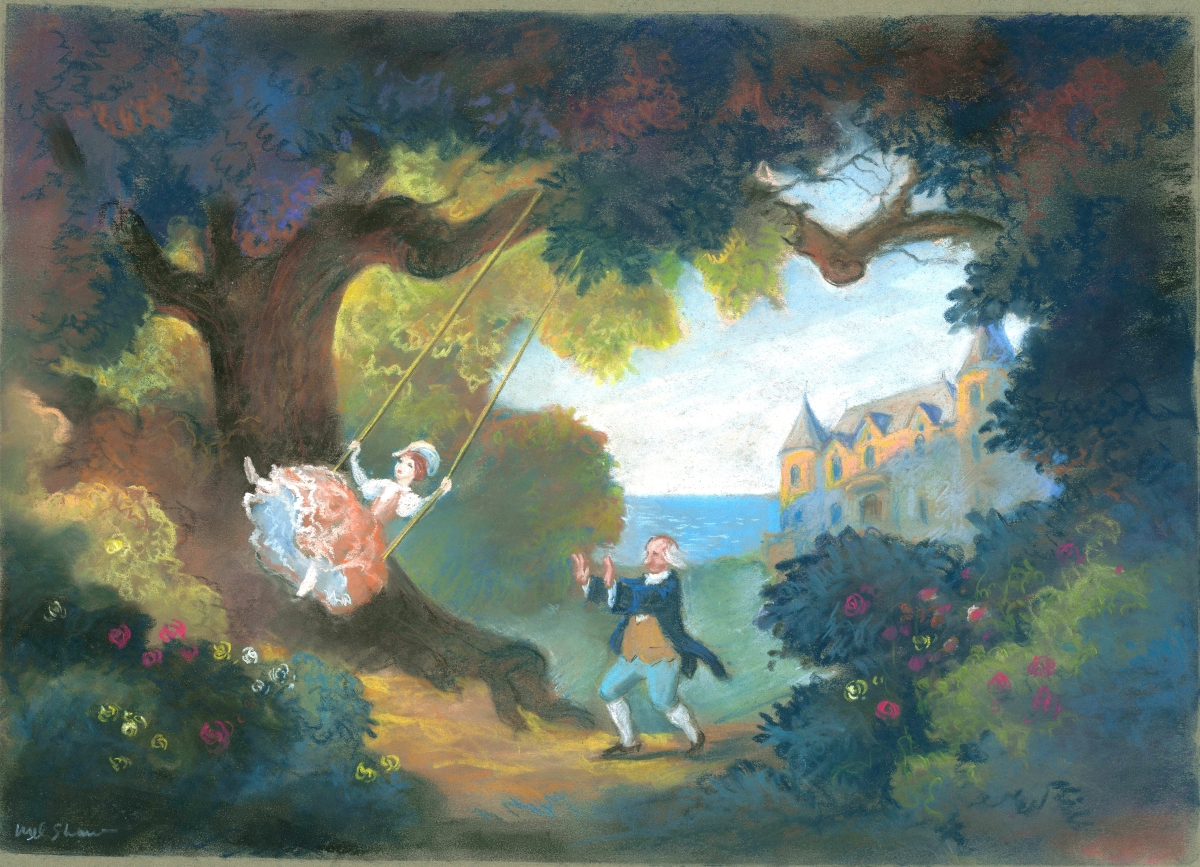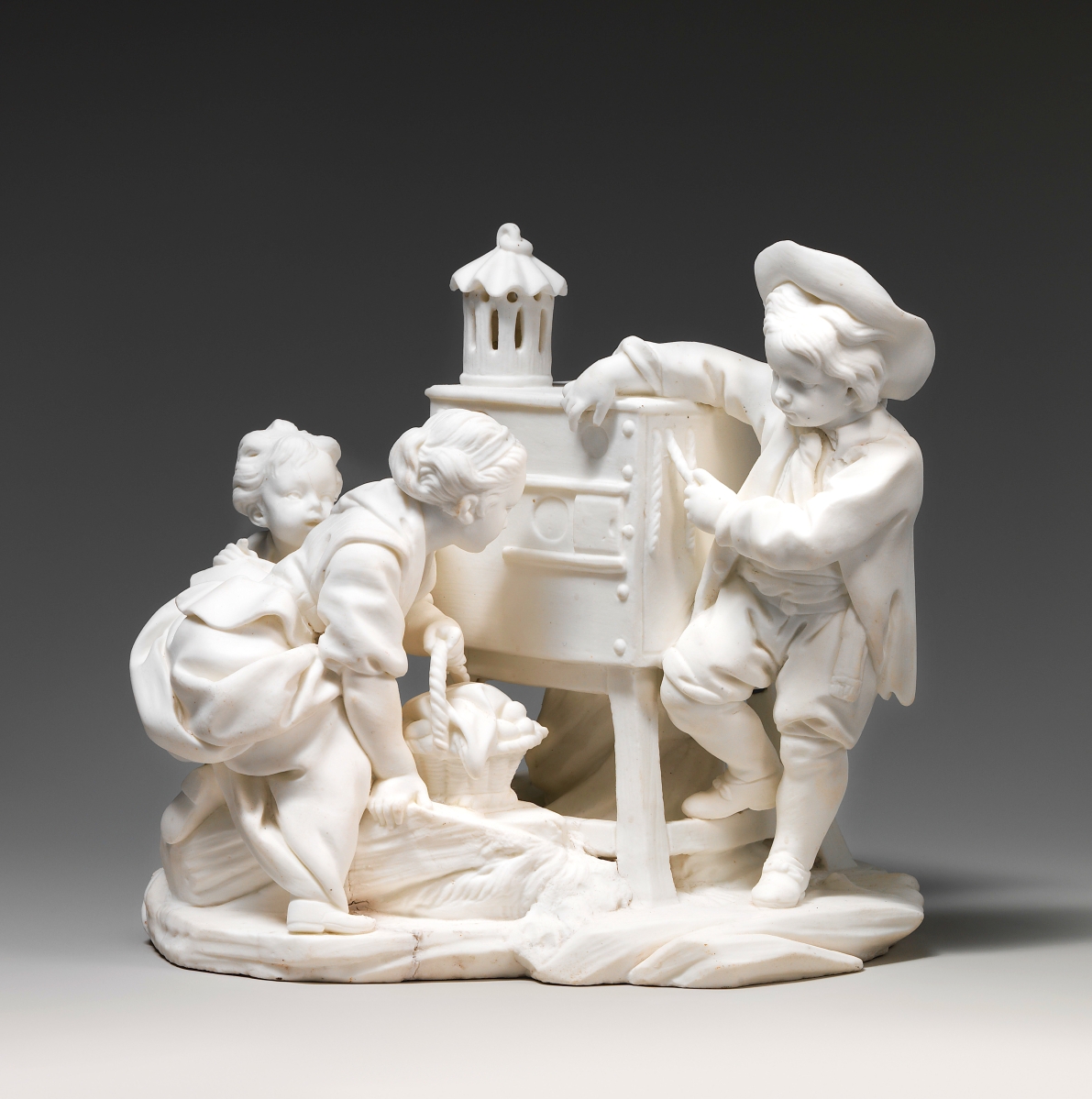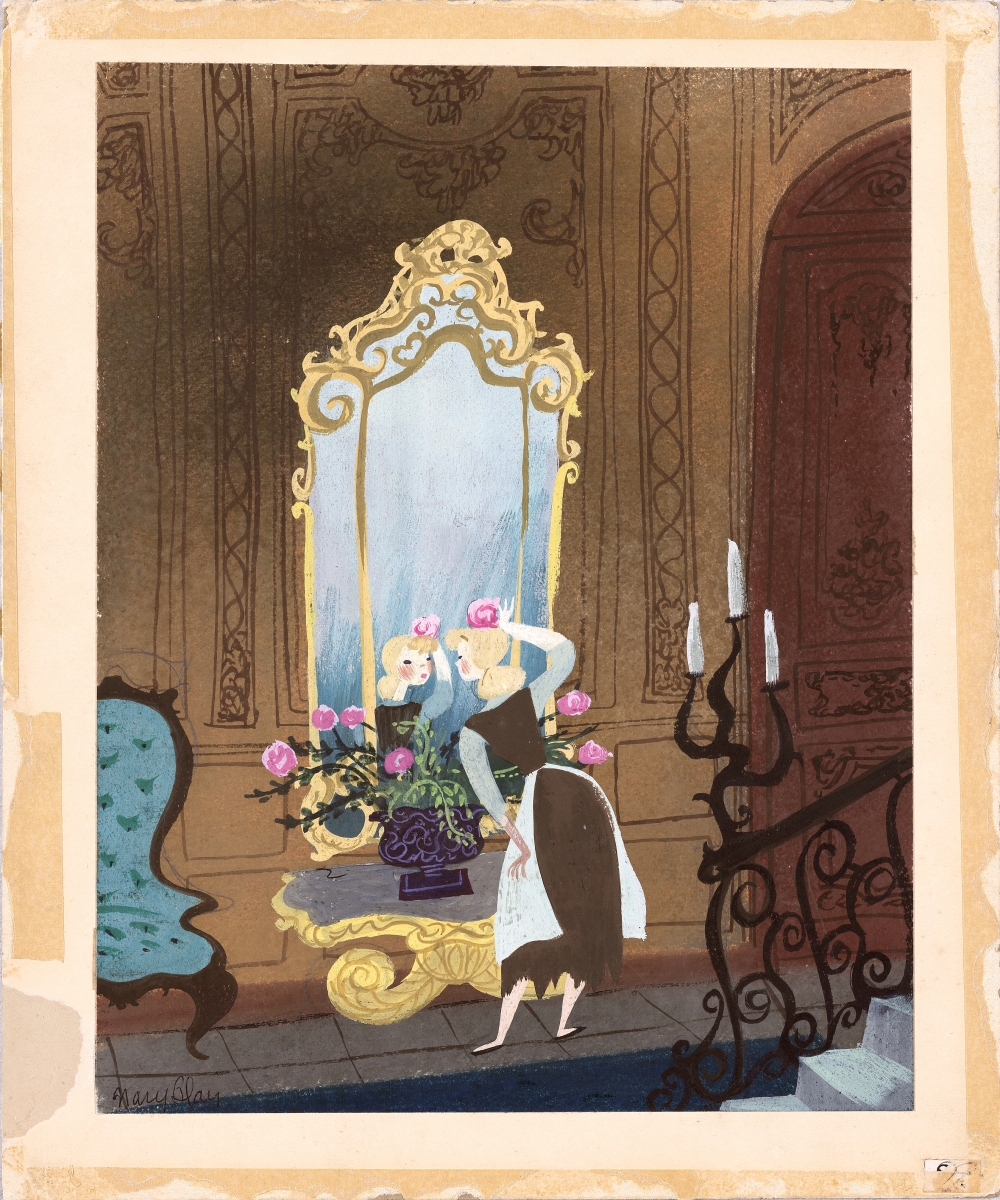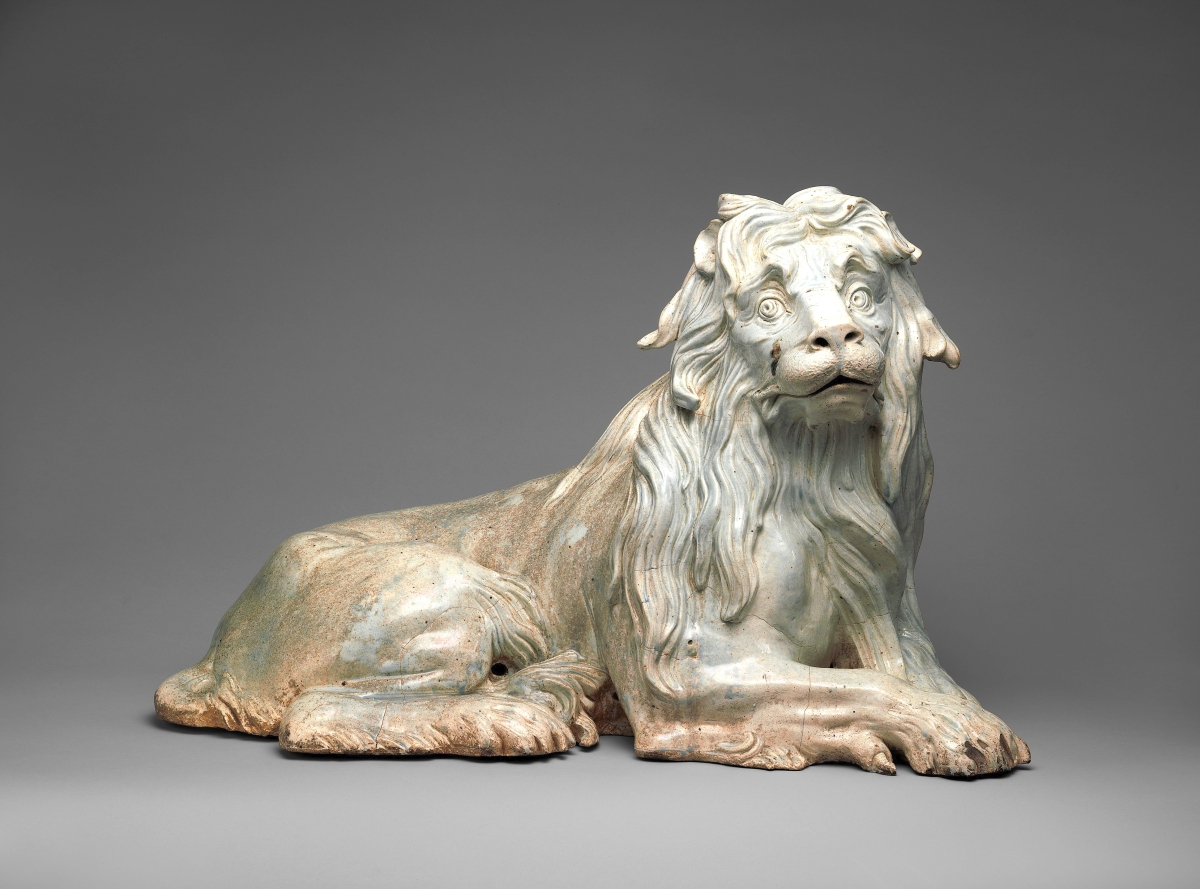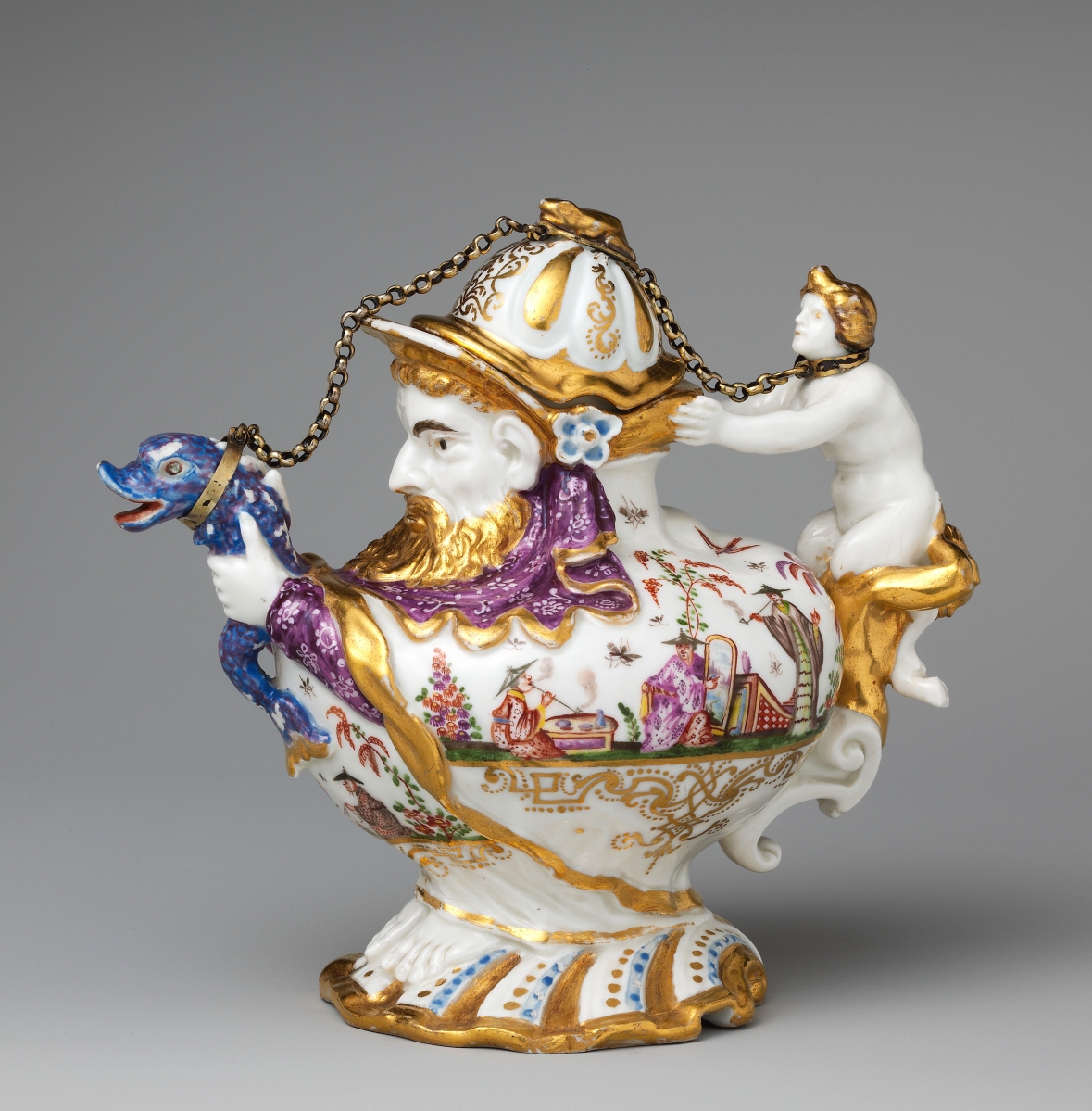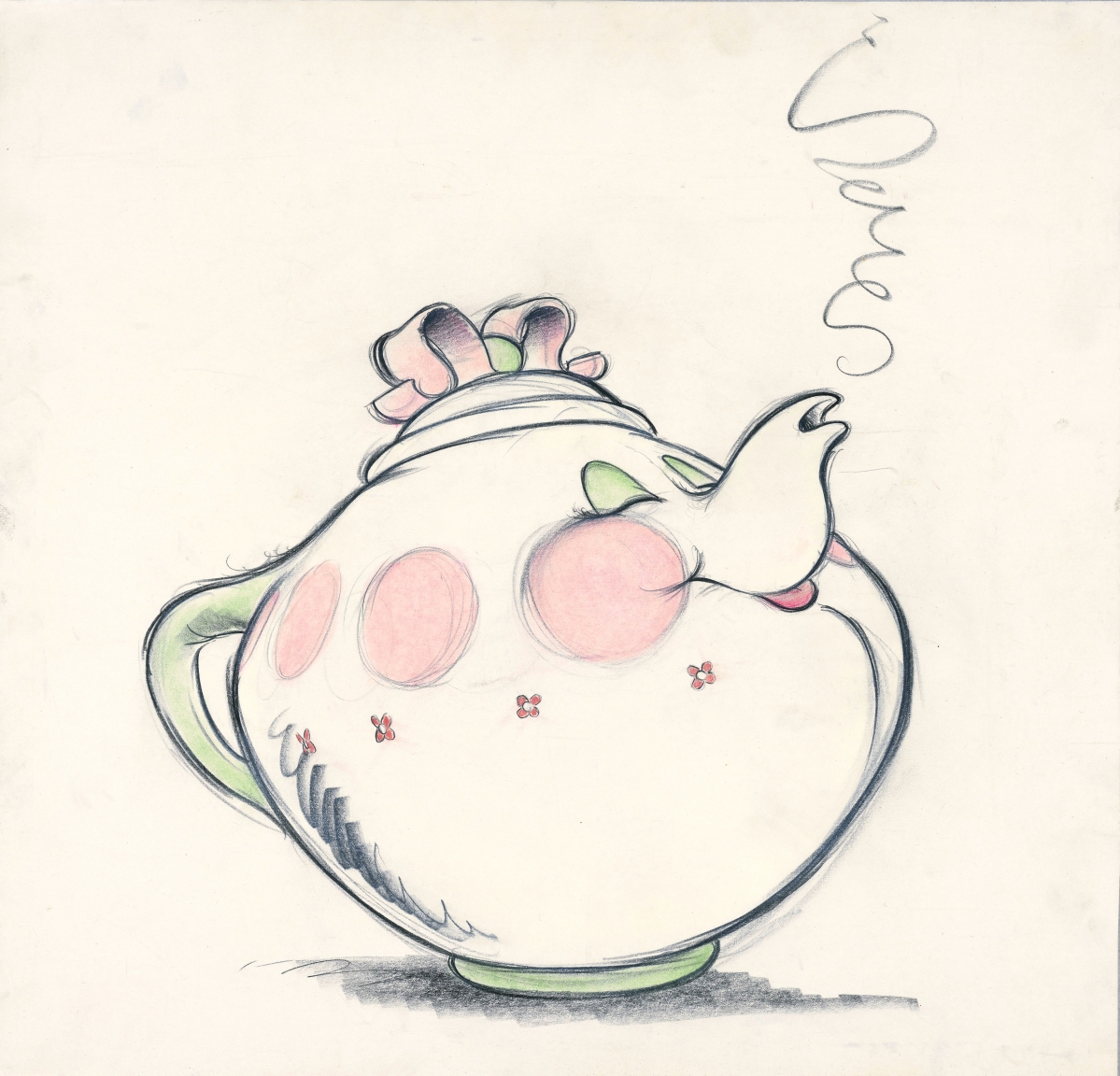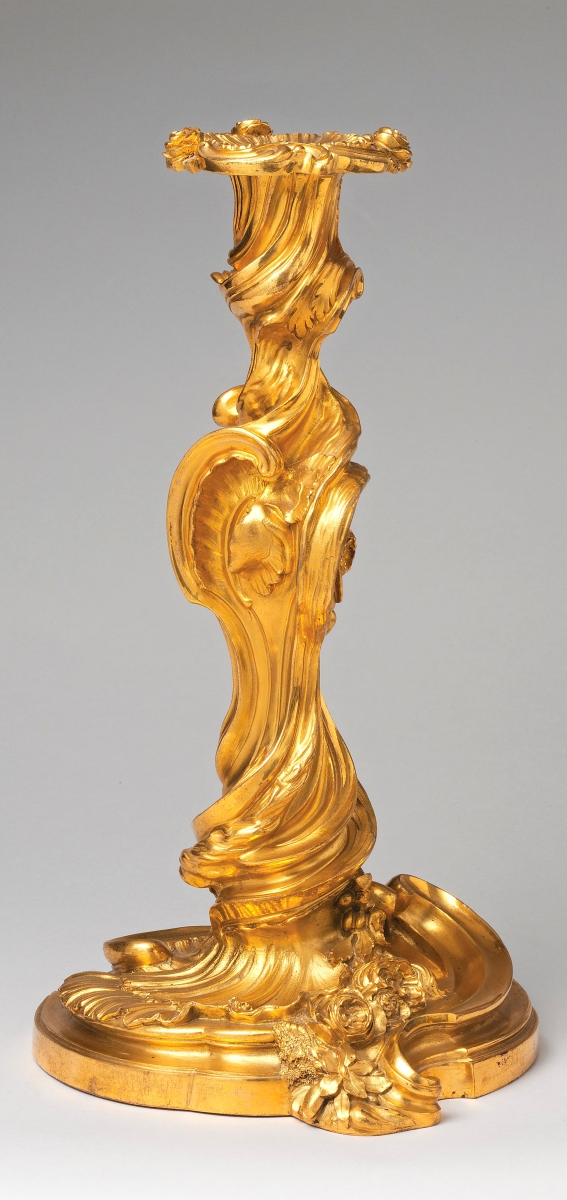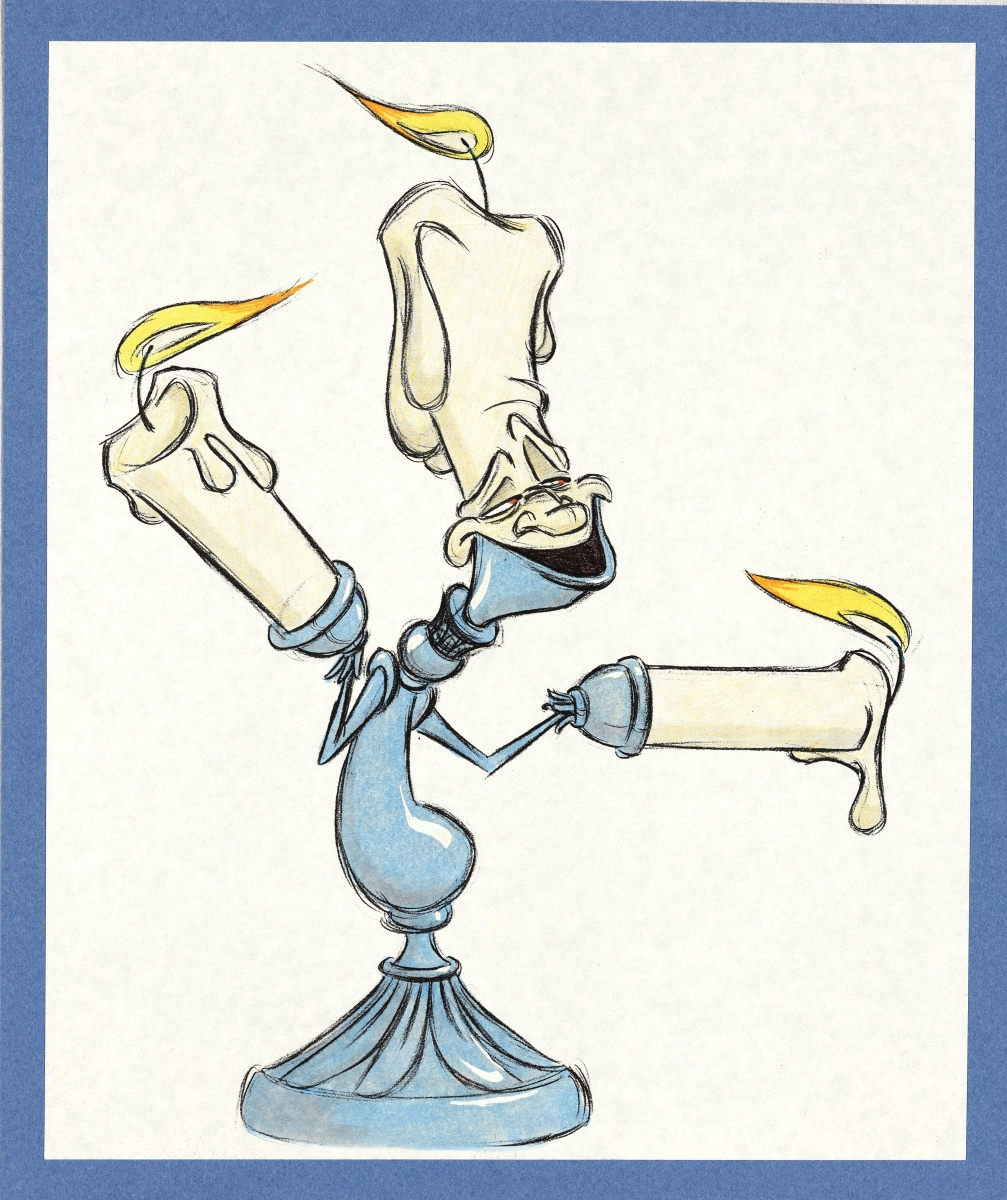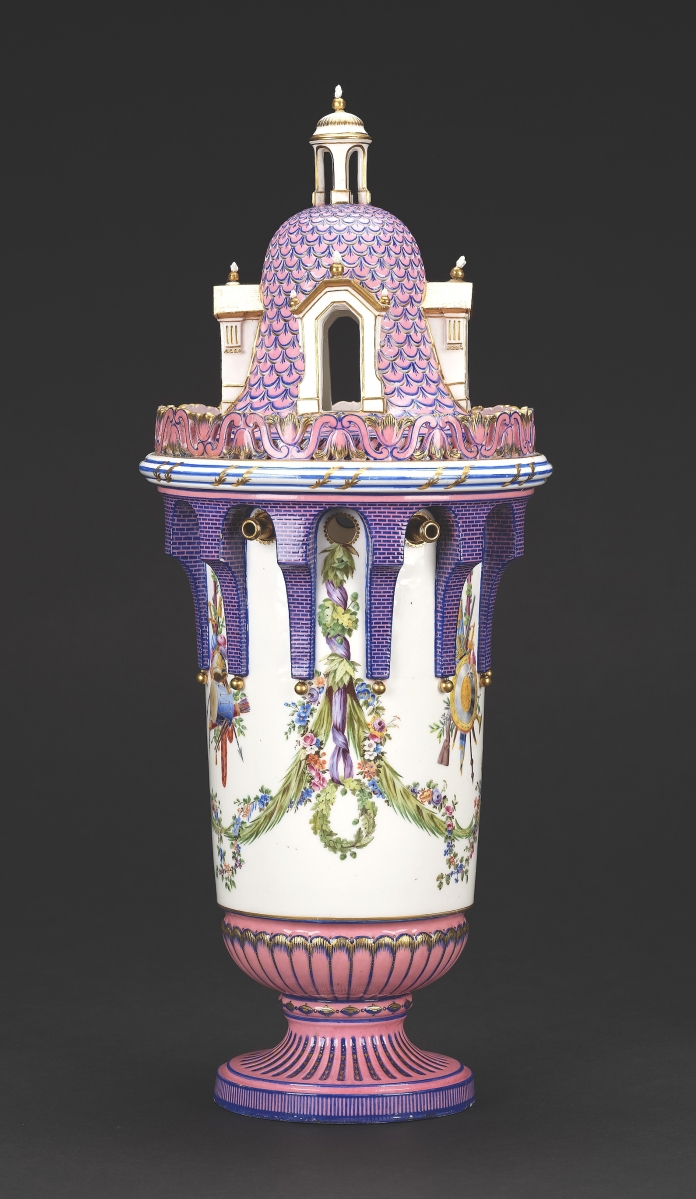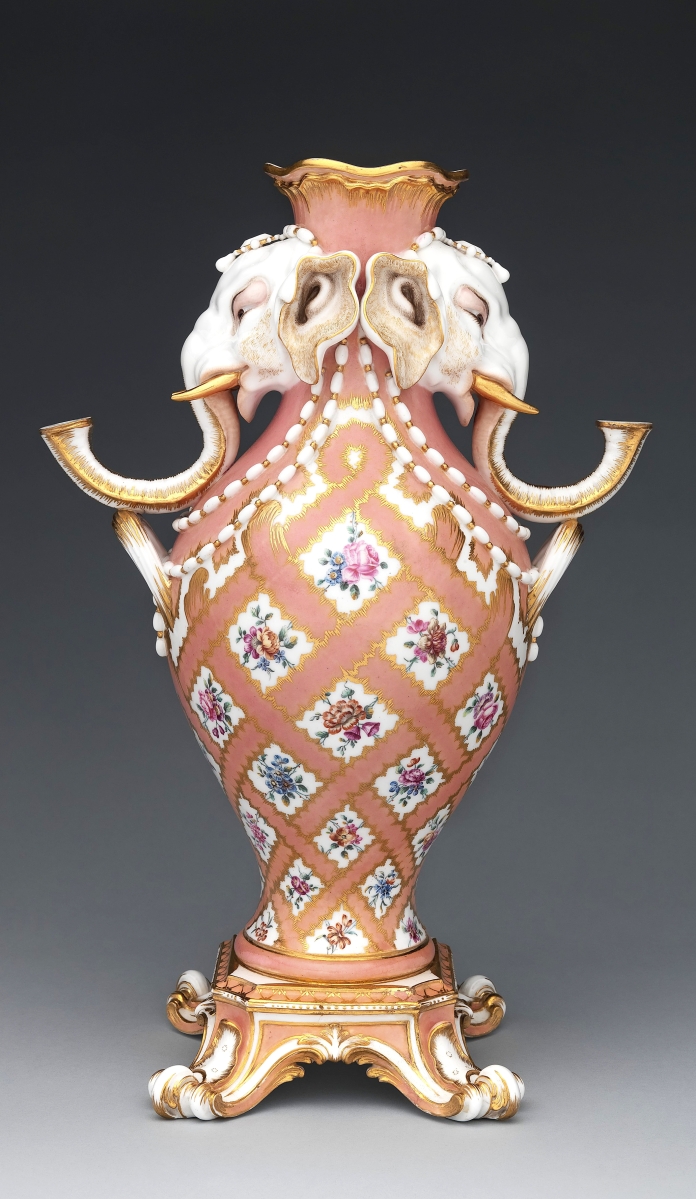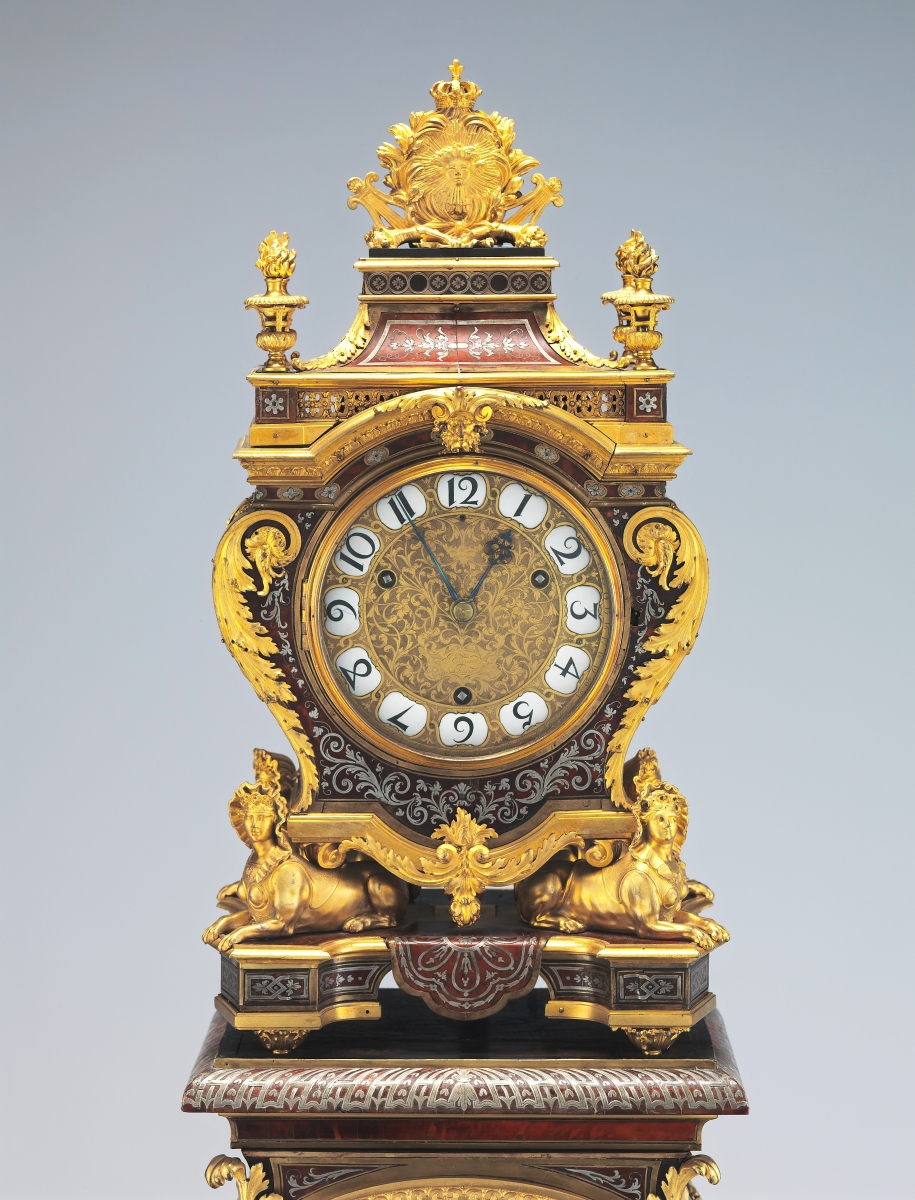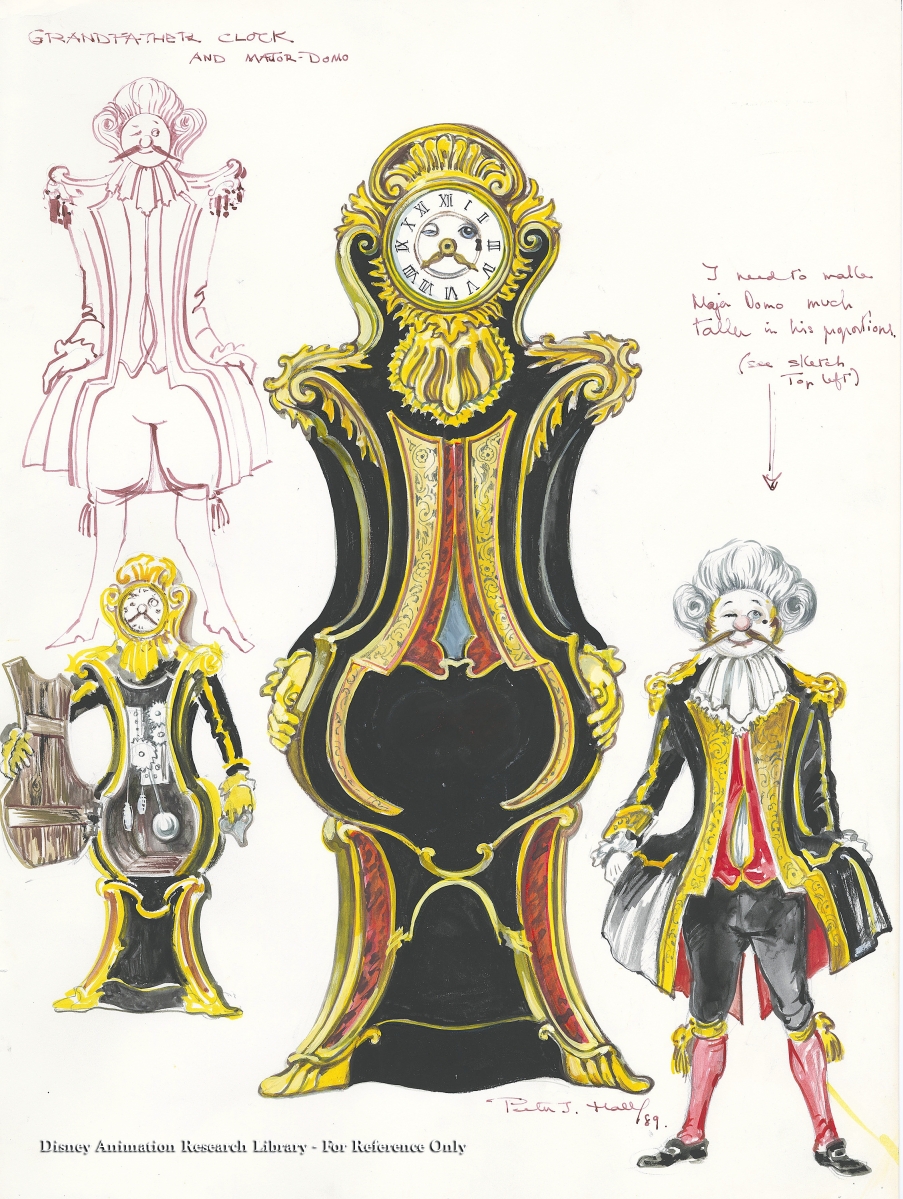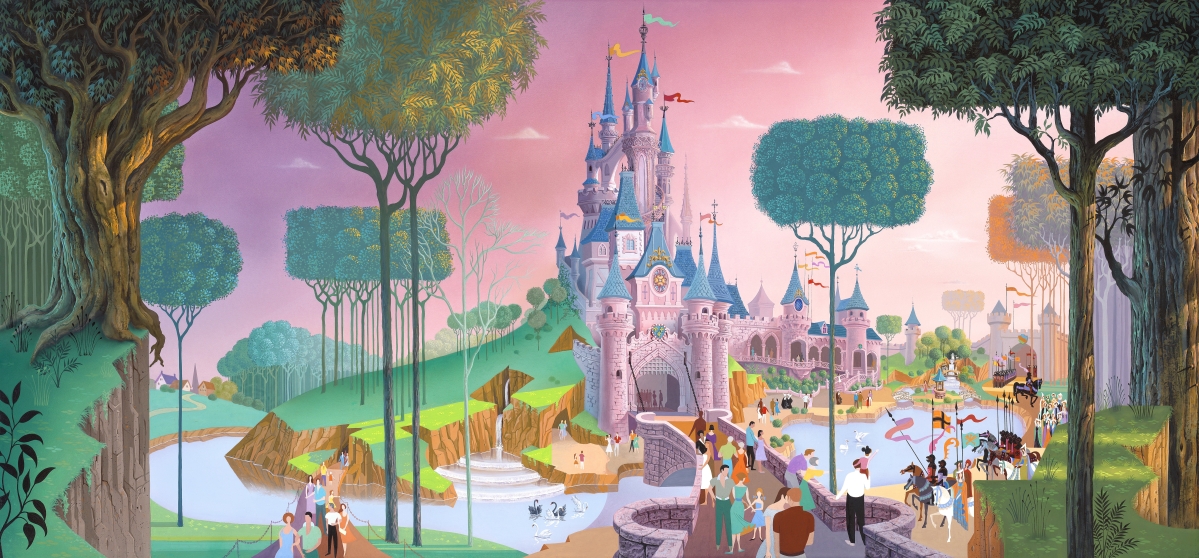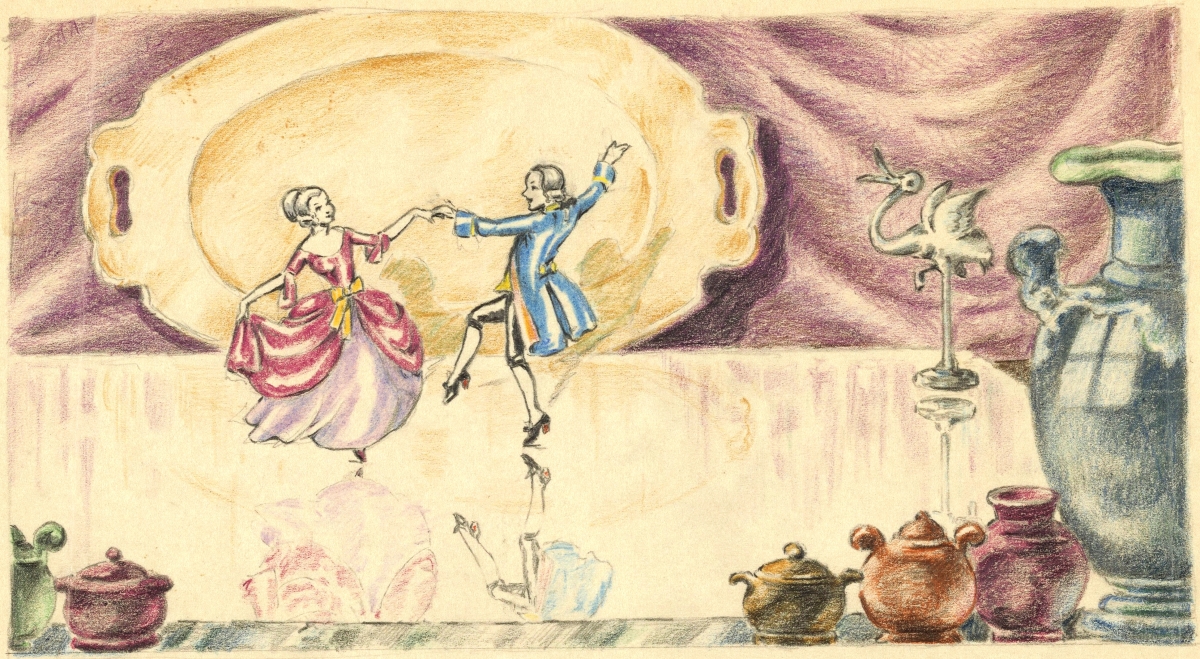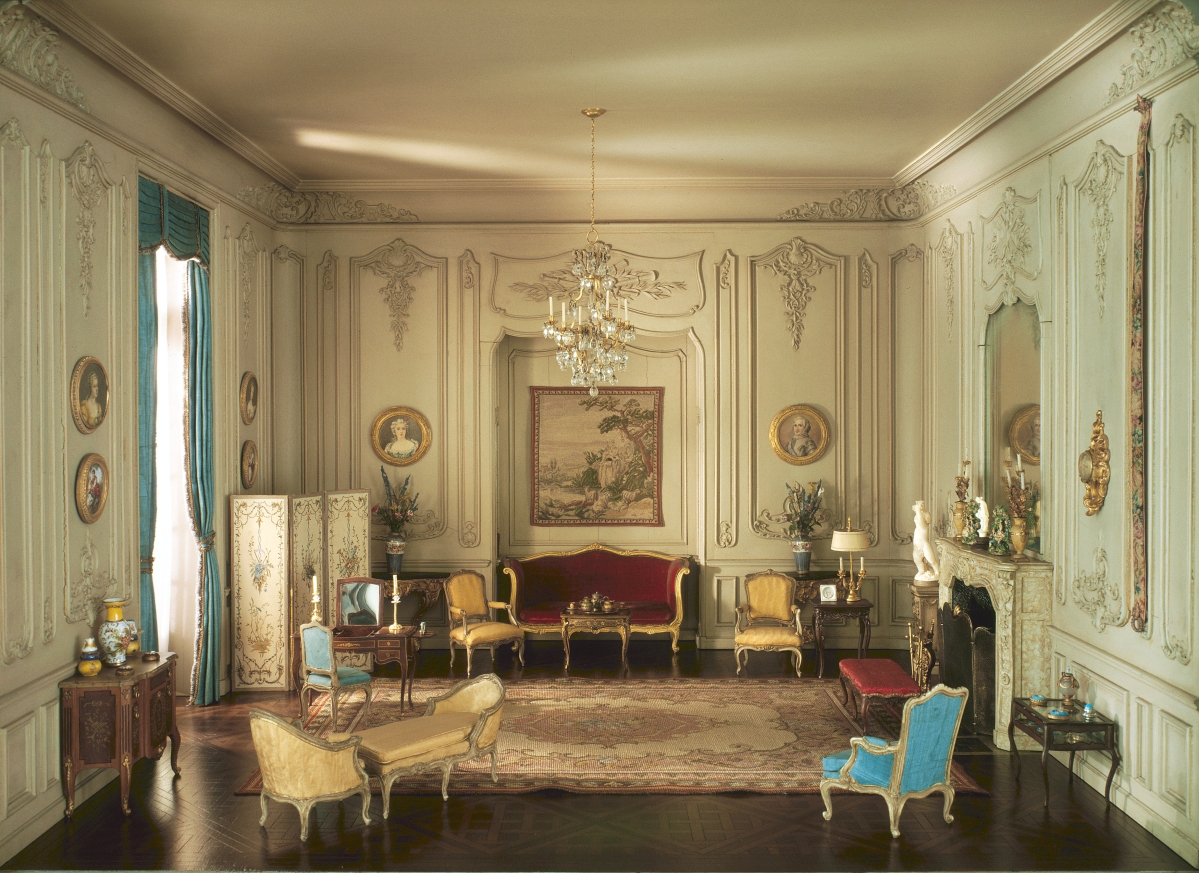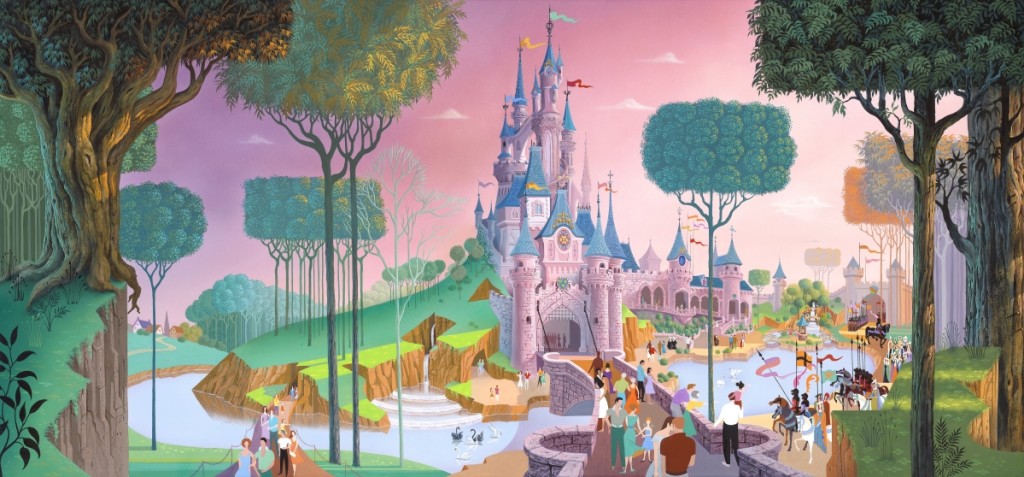
“Le Chateau de la Belle au Bois Dormant, Disneyland Paris” by Frank Armitage, 1988. Gouache and acrylic on board. Walt Disney Imagineering Collection.
By Karla Klein Albertson
NEW YORK CITY – For all merry fans of Twentieth Century animation, the new exhibition may seem to be “The Met Does Disney.” But at the same time, the museum has undertaken a serious academic exploration with accompanying catalog of how deeply the world’s most famous cartoonist was influenced by the artistic environment of the Eighteenth Century.
If you want to see the teapot before it talked, “Inspiring Walt Disney” says, “Be our guest.”
As in an animated tale, a wolf plays a leading role, in this case Wolf Burchard, the Met’s associate curator of European sculpture and decorative arts. He came to the museum in 2019 after his receiving his degrees in England from the Courtauld and undertaking curatorial work with several major collections there.
Talking with Antiques and The Arts Weekly about the first sparks of this brilliant idea for a show, Burchard reached back beyond those studies to his boyhood in France: “Like many children, I grew up watching Disney films. To me, the release of a new Disney film was a very important moment on the calendar. I grew up during the so-called ‘Disney Renaissance’ of the late Eighties and early Nineties.” Among the films issued during that period was the decorative arts-filled Beauty and the Beast in 1991, which plays a prominent role in the exhibition.
“Looking at these films as motion pictures – as a work of art in motion or an animated painting, I witnessed the artistic development of the films,” he said. “That observation of artistic development and stylistic changes is one that later in my professional life I was able to apply to the study of furniture, decorative arts and architecture. So I always looked at the animation in the same way as I looked at any other form of art.”
The plot thickened, when he continued: “Five years ago, I was having dinner with two friends with whom I had done my PhD. We started talking about Disney, something we had never discussed before. You have the music, the color, the plot and the animation all working together and creating a very dramatic effect – and always a sort of operatic crescendo. I was talking about specific moments of animation I enjoyed and we started watching some films together – and they said, ‘Wolf, you have to do an exhibition.’ I started putting together a concept.”
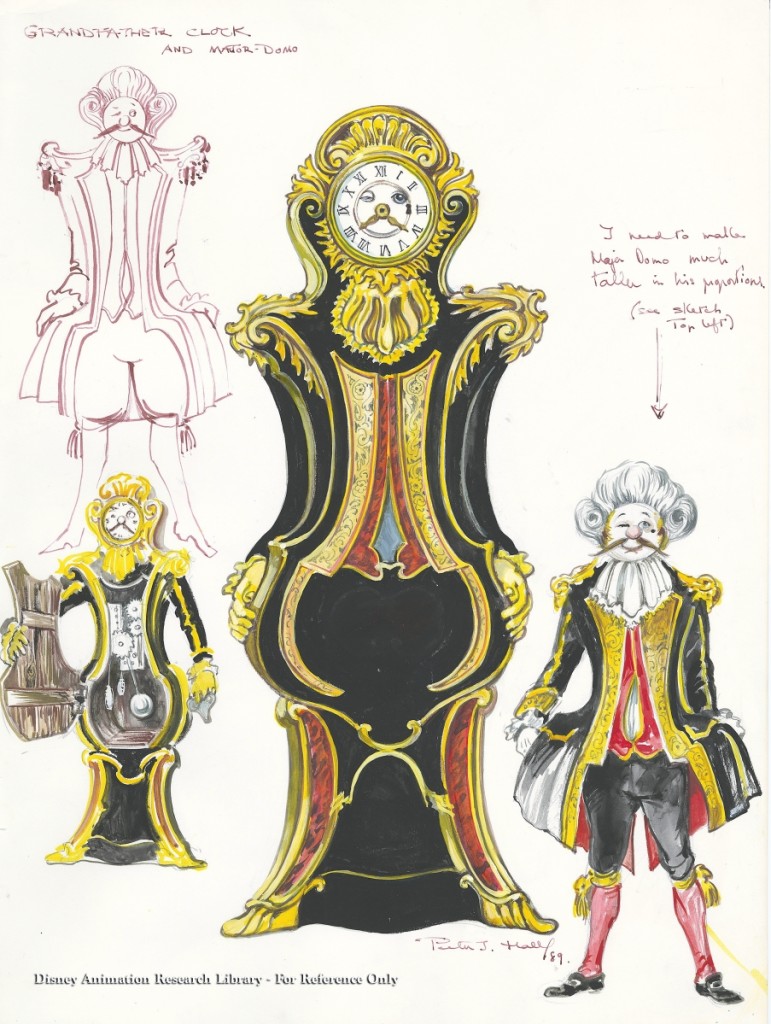
Concept art for Beauty and the Beast by Peter J. Hall, 1991. Watercolor, marker and graphite on paper. Walt Disney Animation Research Library.
While now “Inspiring Walt Disney” is praised as a fabulous idea, the concept of cartoons in the galleries was at first met with reservations in some quarters, but these vanished as the presentation took shape. There had been a precedent, a 2006 exhibition – “Once upon a time: the sources of inspiration for the Disney Studios,” which had been on display at the Galeries nationales du Grand Palais in Paris and the Montreal Museum of Fine Arts. Catalogs are still available and include a discussion of Disney’s interest in European fairy tales and German Romanticism.
The current show is nicely divided between artworks and animation. There are Eighteenth Century European decorative arts – Sevres porcelain, Boulle clocks, candelabra and art.
Then there are 150 production artworks and works on paper from various Disney archives as well as selected film footage. Visitors will stream out to grab an available child for cover, pull out the DVDs or call up that friend with Disney+ – but checking out the complete films will be a necessity. Certain collectors may snap up a Rococo objet and teach it to dance – a bit of whimsy would be welcome at this point.
In the catalog, Burchard pointed out, “There’s a whole chapter about Disney’s miniature furniture, which I think would be of interest to your readers because it’s an important part of the story. Disney was not a great collector – he didn’t fill his house with an important collection of artworks. He did, however, collect about 1,000 pieces of miniature furniture and ceramics.”
His interest may have been inspired by visits to San Francisco’s Golden Gate International Exposition in 1939 where he would have seen Narcissa Niblack Thorne’s miniature period rooms. Many of these exquisitely detailed rooms are now on display at the Art Institute of Chicago. This was a time when full-sized “period rooms” were being installed in museums, which gave a boost to the concept of accurate period set designs for theatre and movies.
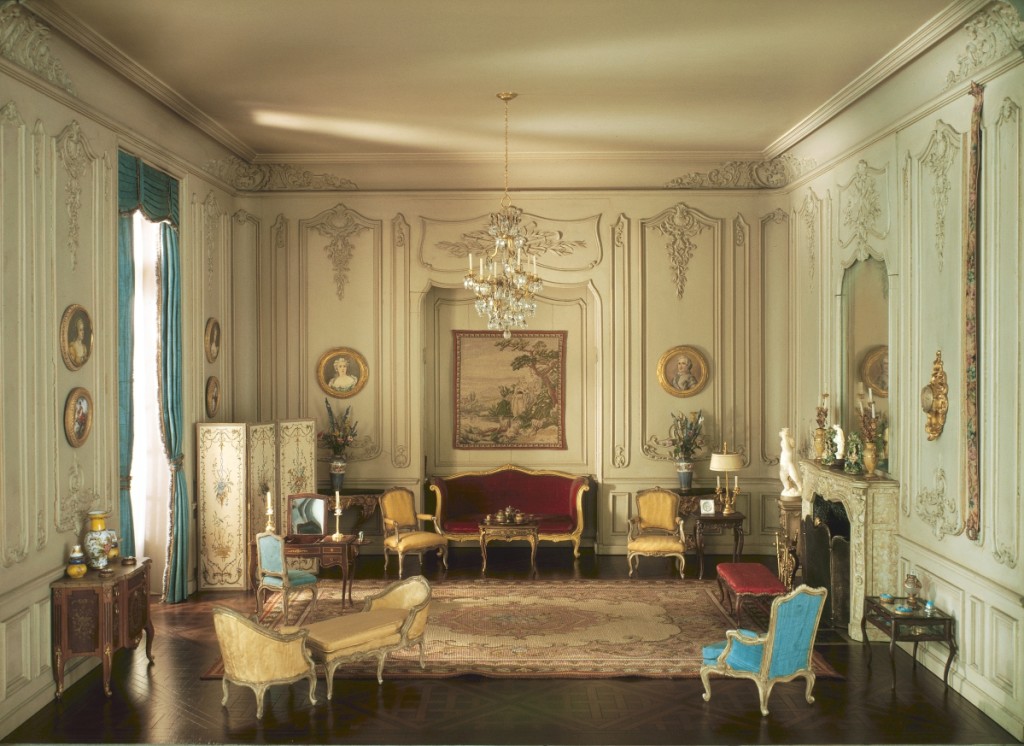
French Boudoir of the Louis XV period, 1740-60, designed by Narcissa Niblack Thorne (American, 1882-1966), circa 1937. Miniature room, mixed media. Art Institute of Chicago, gift of Mrs James Ward Thorne (1941.1206) Photo The Art Institute of Chicago / Art Resource, NY.
Burchard noted, “We are in fact borrowing one of the Thorne rooms, which is a great coup, because they’re built into the wall and they had to get it out of the wall and ship it to New York, thanks to the great generosity of the Art Institute of Chicago. We’re juxtaposing the Thorne room with Disney’s own miniature collection.” The artist gathered not only tiny furniture but right-sized accessories such as painted ceramic plates and platters.
The curatorial goal: “The way I look at it with these miniature furniture pieces – for the children viewing the exhibition – it’s an introduction to furniture terms, like a William and Mary chair, a Windsor chair. A playful way of being introduced to the history of decorative arts.”
So what does Wolf Burchard hope visitors will take away from this unusual exhibition?:
“I said to the designer – Patrick Herron, who’s absolutely brilliant – you need to strike exactly the right chord, to find the middle between academic sobriety and juvenile playfulness. Because we want to show this is a serious exhibition, a scholarly, academic look at Disney. But simultaneously it’s supposed to be fun and enjoyable, something you can walk through on a completely emotional level. My hope is that this is an exhibition that’s going to be as interesting for the children who are not going to read a single label, might not even listen to the audio guide, but just walk through with their parents and grandparents as well as for my direct peers – academics who are writing about the Eighteenth Century – and they seem to take a great interest.”
“The design itself is wonderful because we have some rather dramatic thresholds as you move from one gallery to the next, but they’re rather subtle. And in each gallery, it’s all about a focus on the works of art. And the great thing about the selection of objects is that they are extremely varied, they span about 60 years of Disney history from the very beginning to 1991, when Beauty and the Beast was released.”
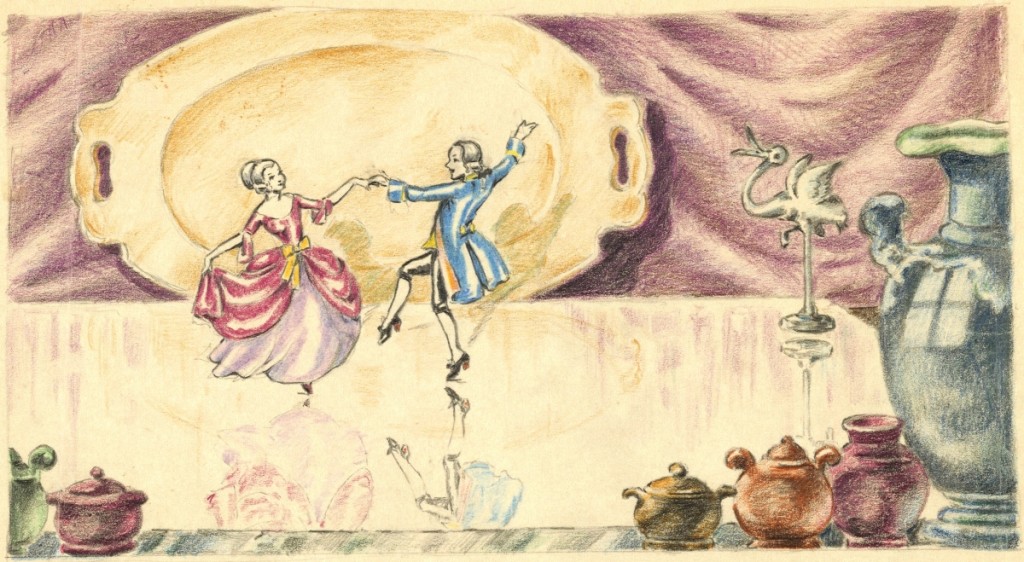
“The China Shop” story sketch by a Disney Studio artist, 1934. Colored pencil and graphite on paper. Walt Disney Animation Research Library.
“And the same is true of the decorative arts. The Disney material ranges from drawings, sketches, watercolors, gouaches, cels – from very rough sketches to finished background paintings. We want them to look at the art. We put a lot of thought into the shape, the scale, the size of the screens and the selection of footage that we’re showing.”
“Then we have a wonderful variety of decorative arts – furniture, tapestries, a great selection of porcelain, clocks – and everything absolutely the highest, highest, highest level. Really the top quality of the Met’s collection. Because you keep looking at something new, your eye doesn’t get tired. The galleries are designed almost like a cinematic experience – you’re going from one scene to the next up to the final grand reveal.”
Collectors who cannot get to New York by March 6 can easily acquire the catalog – and so much more – through the metmuseum.org store. Next year the exhibition will travel to the Wallace Collection at Hertford House in London for an April 6 to October 16 run, where the Disney material will be paired with decorative arts from their own collection.
The Metropolitan Museum of Art is at 1000 5th Avenue. For information, www.metmuseum.org or 212-535-7710.

